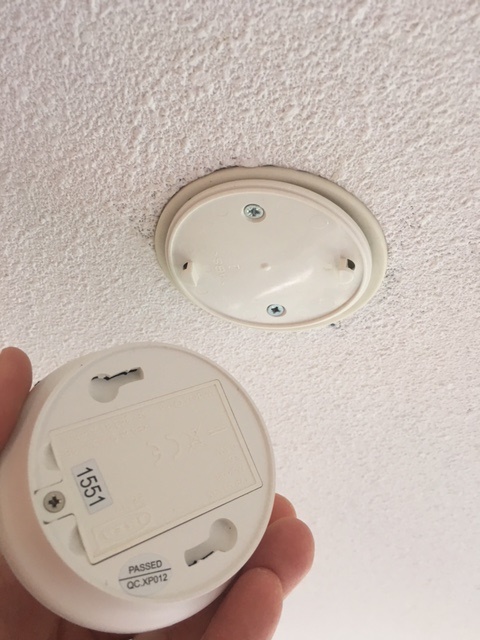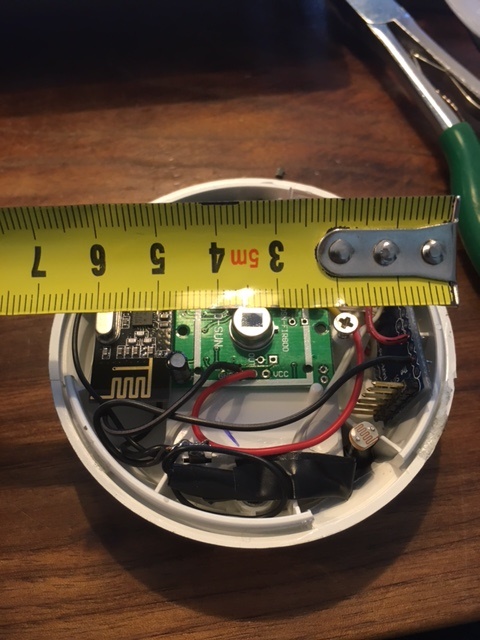Multisensor PIR based on IKEA Molgan
-
I have created a Multi sensor PIR including a dallas temp measurement and LDR light measurment. For the PIR I wanted to use the Original PIR but it got "destroyed" during my investigation. The Pir runs on two AAA as I have removed the voltage regulator on my arduino pro mini.
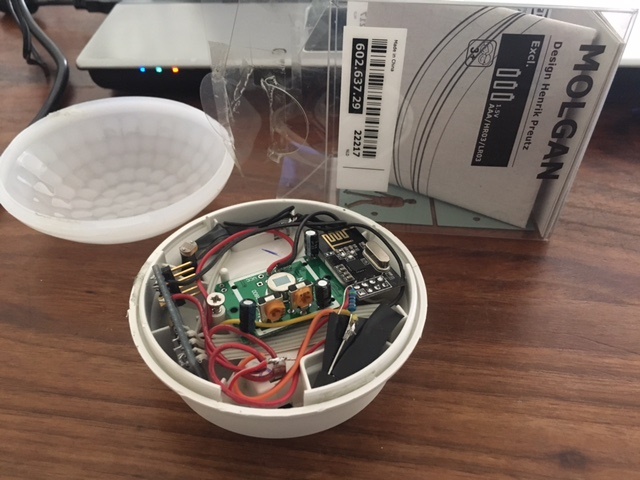
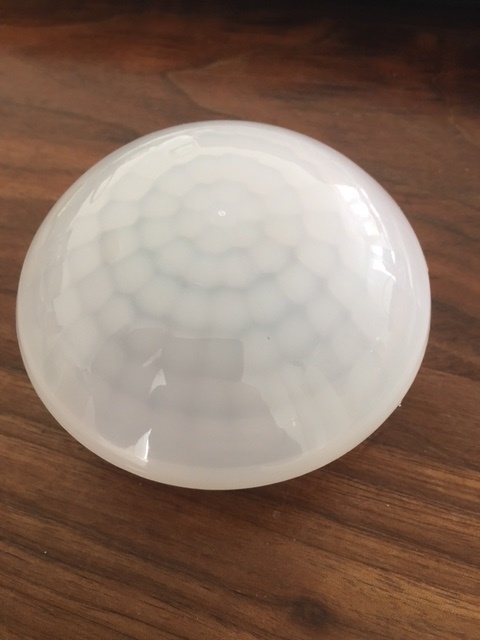
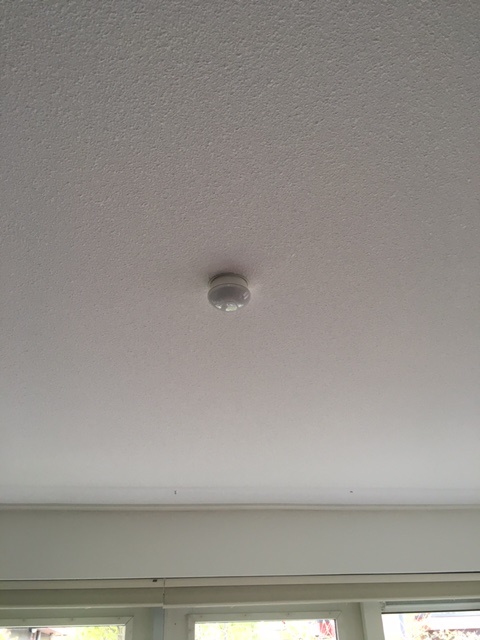
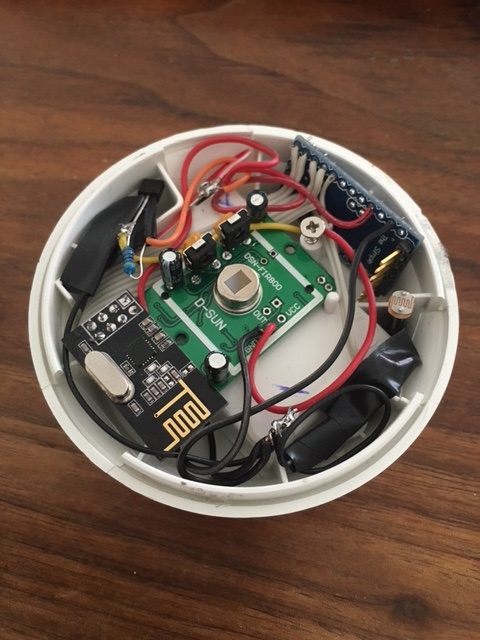
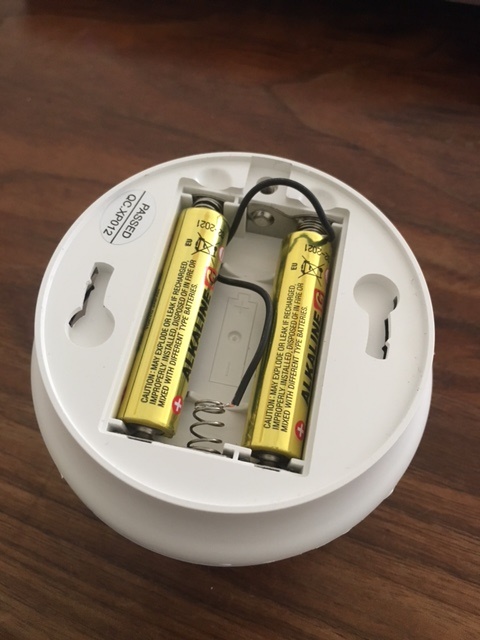
-
Just looked up "Molgan" on ikea.com, it doesn't say anything about including PIR / Motion detection? Only that it's a LED lamp
How well does it work with the large Fresnel lens?
@tbowmo I got hooked up too :D and found this: http://www.terenceang.com/archives/31
-
So far I do not see a big difference with the Original smaller lens. Although the detection from the side is limited. But that's about the same as the Original.
Inside there is a PIR in combination with 5 leds and a photodiode. As soon as it gets dark the PIR is active and as soon as movement is detected the leds are switched on for about 30 sec.
The IKEA PIR is based on BIS0001 chip, which is a very common chip. When High it has an output of about 1,8 volt. Via a transistor the leds are switch on. Although there are three batteries in the housing the PIR runs also very well on two. (3.3 volt) -
@tbowmo I got hooked up too :D and found this: http://www.terenceang.com/archives/31
@TimO Yes if have read this post too, but here he has used an optocoupler. Which is not necessary if you reduce the input to 3 volt... makes it more easy. Or even use the 1,8 volt as input. But don't short circuit it with the input pin next to it.... as the PIR will stay high forever.:smiling_imp:


-
@dynamite
nice clean hack :)
Could you tell me what is the overall thickness please? I think I will try to buy one just to see how fit some of my multisensors boards inside..even if i will use 3d printing which cost less $ in plastic, it's still a very nice alternative to have at hand.
Maybe you could use some i2c sensors to improve your power consumption.
Thx for your share ;) -
I have created a Multi sensor PIR including a dallas temp measurement and LDR light measurment. For the PIR I wanted to use the Original PIR but it got "destroyed" during my investigation. The Pir runs on two AAA as I have removed the voltage regulator on my arduino pro mini.





-
@dynamite Great hack!
Especially when using the combination of original PIR, enclosure and battery holder for E 5,-.
Can't be beaten! :+1: -
@dynamite
nice clean hack :)
Could you tell me what is the overall thickness please? I think I will try to buy one just to see how fit some of my multisensors boards inside..even if i will use 3d printing which cost less $ in plastic, it's still a very nice alternative to have at hand.
Maybe you could use some i2c sensors to improve your power consumption.
Thx for your share ;) -
Think I have to visit ikea tomorrow, and bring home a couple of samples :)
Only about 5$...
-
7€ here...french conversion :angry:
it's at one hour from my home..but I think I will visit too this weekend. well done, now I can't wait :) -
7€ here...french conversion :angry:
it's at one hour from my home..but I think I will visit too this weekend. well done, now I can't wait :) -
Hi,
is it possible to describe, how to wire the original PIR, with the Arduino?I have some Molgan's here and want to mod them, if i can use the original PIR, it would be perfect :)
Maybe an HowTo?
Many Thanks
@Floca hi the Original Ikea Pir, I kind of destroyed during the "investigation". I my previous post I have posted a picture of the pir inside. I would feed the pir with either 2 or 3 batteries. (3/4,5v) after that you can either use the signal directly after the chip. Th is is 1,8v but I don't know if the arduino takes that as high..? If not you can take the signal at the resistors of the LEDs. The voltage level here is depending on your battery infeed. So either 3v or 4,5v. Don't think both will be a problem for the arduino. To eliminate the led you can take away one or more resistors.
Maybe somebody can say more
About the allowable Voltage levels. For battery live a 3v pro mini would be better. For ease of use a 5v version would be better -
@Floca hi the Original Ikea Pir, I kind of destroyed during the "investigation". I my previous post I have posted a picture of the pir inside. I would feed the pir with either 2 or 3 batteries. (3/4,5v) after that you can either use the signal directly after the chip. Th is is 1,8v but I don't know if the arduino takes that as high..? If not you can take the signal at the resistors of the LEDs. The voltage level here is depending on your battery infeed. So either 3v or 4,5v. Don't think both will be a problem for the arduino. To eliminate the led you can take away one or more resistors.
Maybe somebody can say more
About the allowable Voltage levels. For battery live a 3v pro mini would be better. For ease of use a 5v version would be better -
I now have a fresh supply of Molgan to be modified. And I will post my modification of the existing board soon. Status I can now use the input of the existing PIR signal. And I have discovered that by sending out a high or low on one of the arduino pins I can switch the existing LED on / off. Of course I can use a relay function to control but as it is running on batteries the sensor has to sleep. I was thinking of sending out a parameter (true / false) which enables the sensor to activate the LED on a trigger of the PIR. How could I send over this parameter? Any (creative) idea's as the sensor is sleeping most of the time?
Now I am thinking of it, could it be possible that such a value is read by the sensor when the sensor is getting out of the sleep function.

